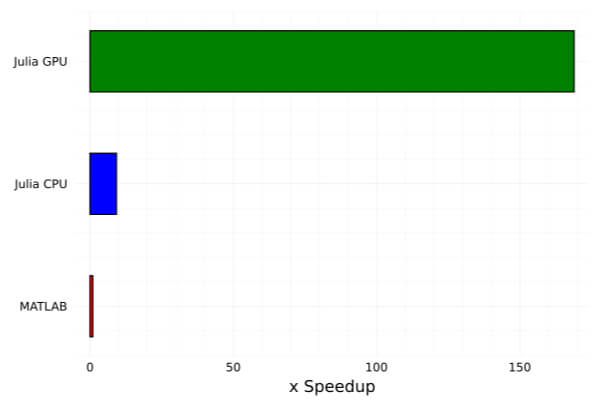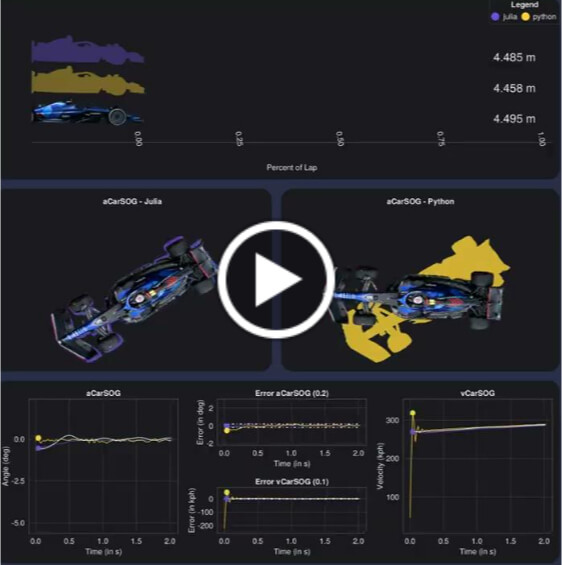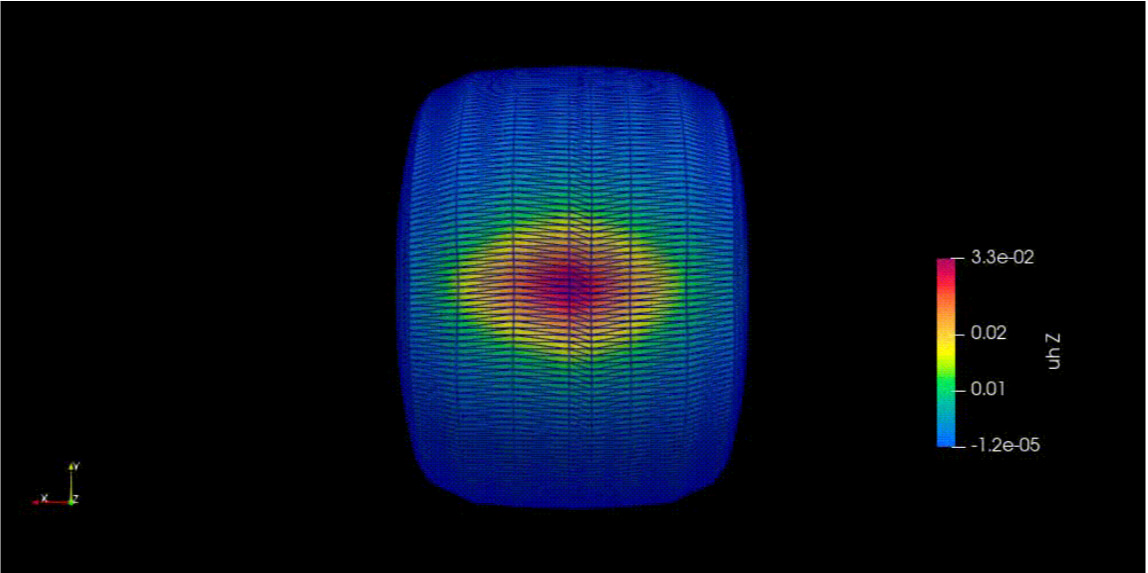In Formula One racing, every advantage counts.
Teams are continually seeking ways to improve performance on and off the track. One key area of focus is the use of simulation to understand the performance of the car and make strategic decisions during races. JuliaSim is a cloud platform purpose-built for fast simulations, and it has become a valuable tool for the Williams Racing.
Hardware Accelerated Aeromap Modeling
Formula One teams benefit from capturing pressure measurements all around their car to understand its aerodynamics at various attitudes and positions around the track. Williams Racing uses MATLAB for predictive modeling of these pressure measurements. Williams Racing set out to improve the performance of the predictive model using Julia. Thanks to Julia's high-level GPU programming features, Williams Racing was able to improve both the speed and accuracy of the existing MATLAB model. The final Julia model runs 169x faster and is 7% more accurate. This new model is deployed on JuliaHub and integrates with the track- side operations.

Digital Twin Replaces Physical Sensor
Williams Racing also employed JuliaSim to create a digital twin for a physical sensor. The digital twin provides in-lap insights without the negative impact of extra weight and poor aerodynamics that come with running a race with the physical sensor. In the past, Williams Racing tackled this problem using classic machine learning techniques. JuliaSim reimagined and improved the approach by implementing SciML techniques. The JuliaSim neural network uses a special architecture[1] with two major advantages: it captures high-frequency features commonly found in vehicle control inputs, and it incorporates known physical relationships that model the vehicle's motion. This architecture introduces an ability to learn relevant mathematical relationships while maintaining its data- driven nature of learning the missing relationships not known a priori. The resulting digital twin produces faster and more accurate results than the pure Machine Learning (ML) model. JuliaSim deployed the model as an FMU for easy integration with standard modeling tools.

Faster Simulations on More Complex Geometry
Tires in Formula One are the great equalizer. Every team uses the same tires and knowledge around them is protected in order to maintain a fair playing field. Races are often won or lost based on a team's decision to change their vehicle's tires. This is a strategic decision that depends heavily on weather and track conditions. For this reason, Williams Racing needs a way to model motorsport tire deformation. The team uses MATLAB to perform this finite element analysis. JuliaSim offered several advantages over the existing MATLAB model. JuliaSim's tire model achieved a 1,000x speedup for the Quasi-Static PDE and an 8x speedup for the Dynamic PDE. Both results were achieved on a geometry that was 2.3x higher fidelity than the mesh used in MATLAB.

Conclusion
Williams Racing was able to improve three areas of its engineering process: aeromap modeling, speed over ground sensor, and tire deformation. JuliaHub was able to deliver these improvements thanks to its cloud-native capabilities and JuliaSim's advanced offerings for Scientific Machine Learning.


